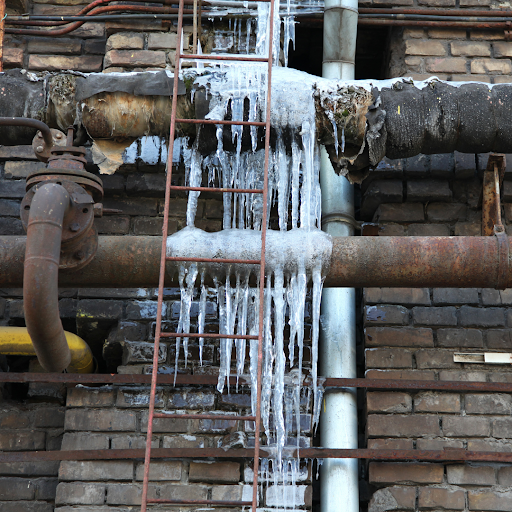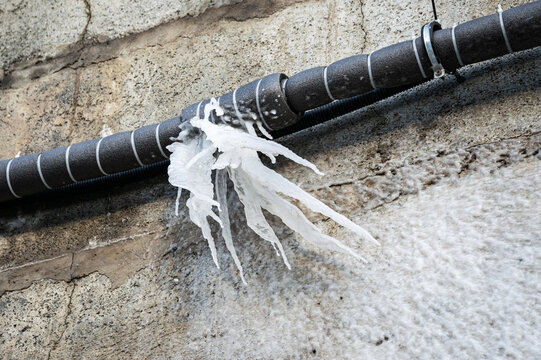How to Protect Pipes from Freezing Damage: Crucial Guidance
How to Protect Pipes from Freezing Damage: Crucial Guidance
Blog Article
They are making a number of great points relating to Helpful Tips to Prevent Frozen Pipes this Winter as a whole in this content down below.

Cold weather can wreak havoc on your plumbing, especially by freezing pipelines. Right here's how to prevent it from happening and what to do if it does.
Introduction
As temperatures decrease, the danger of icy pipelines boosts, potentially causing expensive fixings and water damages. Recognizing exactly how to avoid frozen pipelines is important for house owners in chilly environments.
Recognizing Icy Pipelines
What creates pipelines to freeze?
Pipes freeze when revealed to temperature levels listed below 32 ° F (0 ° C) for prolonged durations. As water inside the pipelines freezes, it broadens, putting pressure on the pipe walls and possibly causing them to burst.
Threats and damages
Frozen pipes can bring about water interruptions, home damages, and expensive repair services. Ruptured pipes can flood homes and trigger substantial architectural damage.
Indicators of Frozen Pipes
Identifying icy pipelines early can prevent them from rupturing.
Just how to recognize icy pipelines
Try to find reduced water flow from faucets, uncommon smells or noises from pipes, and visible frost on revealed pipes.
Prevention Tips
Shielding prone pipes
Cover pipelines in insulation sleeves or utilize heat tape to shield them from freezing temperatures. Concentrate on pipes in unheated or outside areas of the home.
Home heating techniques
Maintain interior rooms effectively heated up, specifically locations with pipes. Open cupboard doors to allow warm air to distribute around pipelines under sinks.
Protecting Outside Pipes
Garden hose pipes and exterior taps
Disconnect and drain garden pipes prior to winter. Set up frost-proof spigots or cover exterior taps with shielded caps.
What to Do If Your Pipelines Freeze
Immediate activities to take
If you believe icy pipelines, maintain faucets open to ease pressure as the ice melts. Make use of a hairdryer or towels taken in warm water to thaw pipes gradually.
Long-Term Solutions
Structural adjustments
Take into consideration rerouting pipelines far from exterior walls or unheated locations. Add added insulation to attics, cellars, and crawl spaces.
Upgrading insulation
Buy premium insulation for pipes, attics, and walls. Correct insulation aids preserve constant temperatures and decreases the threat of icy pipelines.
Final thought
Stopping frozen pipes calls for proactive steps and fast responses. By understanding the causes, indications, and safety nets, homeowners can protect their plumbing during cold weather.
6 Proven Ways to Prevent Frozen Pipes and Protect Your Home
Disconnect and Drain Garden Hoses
Before winter arrives, start by disconnecting your garden hoses and draining any remaining water. Close the shut-off valves that supply outdoor hose bibs and leave the outdoor faucet open to allow any residual water to drain. For extra protection, consider using faucet covers throughout the colder months. It’s also important to drain water from any sprinkler supply lines following the manufacturer’s directions.
Insulate Exposed Pipes
Insulating your pipes is an effective way to prevent freezing. Pipe insulation is readily available at home improvement stores and is relatively inexpensive. Pay close attention to pipes in unheated areas such as the attic, basement, crawl spaces, or garage. Apply foam insulation generously to create a buffer against the cold. You can also wrap your pipes in heat tape or thermostat-controlled heat cables for added warmth.
Seal Air Leaks
Inspect your home for any cracks or openings that could let in cold air. Seal any holes around the piping in interior or exterior walls, as well as the sill plates where your home rests on its foundation. Additionally, make sure to keep your garage door closed unless you’re entering or exiting. Leaving it open creates a significant air leak that can lead to frozen pipes.
Allow Warm Air Circulation
During cold snaps, it’s essential to allow warm air to circulate evenly throughout your home. Leave interior doors ajar to promote better airflow. Open kitchen and bathroom cabinets to help distribute heat consistently around the rooms. If you have small children or pets, be sure to remove any household chemicals or potentially harmful cleaners from open cabinets for safety.
Let Faucets Drip
A small trickle of water can make a big difference in preventing ice formation inside your pipes. When temperatures drop significantly, start a drip of water from all faucets served by exposed pipes. This continuous flow helps prevent the water from freezing. Additionally, running a few faucets slightly can relieve pressure inside the pipes, reducing the chances of a rupture if the water inside does freeze.
https://choateshvac.com/6-proven-ways-to-prevent-frozen-pipes-and-protect-your-home/

I'm just very excited about Prevent Frozen Pipes and I am assuming you liked the blog posting. Sharing is caring. You just don't know, you may just be helping someone out. Kudos for being here. Kindly come by our site back soon.
Book An Appointment Report this page